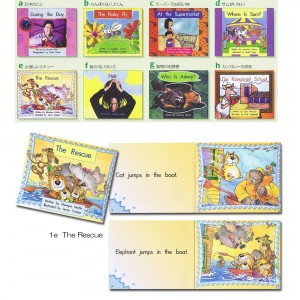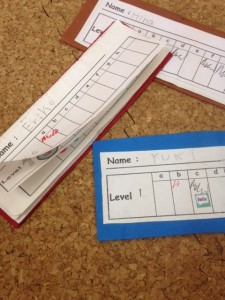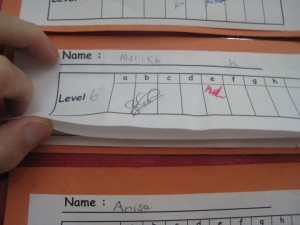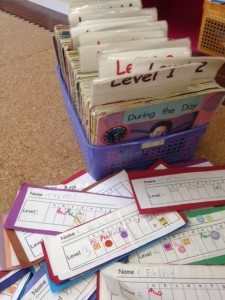

- 54. 10 Useful Pieces of Advice for Teaching with LEARNING WORLD #9 & 10
- 55. “Happy New Year!” “I don’t say that.”
- 53. Halloween 2019
- 52. READY Workbook Pg. 17
- 51. English-Uplift 1-Day Seminars
- 50. READY Workbook - vocabulary copying activity
- 49. 10 Useful Pieces of Advice for Teaching with LEARNING WORLD #8
- 48. 10 Useful Pieces of Advice for Teaching with LEARNING WORLD #7
- 47. 10 Useful Pieces of Advice for Teaching with LEARNING WORLD #6
- 46. 10 Useful Pieces of Advice for Teaching with LEARNING WORLD #5
- 45. 10 Useful Pieces of Advice for Teaching with LEARNING WORLD #4
- 44. 10 Useful Pieces of Advice for Teaching with LEARNING WORLD #3
- Kindergarten aged students
- Lower Elementary-school aged students
- Upper Elementary-school aged students
- Junior High and older students
- Others
5. YOUNG READERS
A couple of questions for you regarding the development of students’ reading ability:
・What’s your strategy for improving your students’ reading?
・At what point do you engage your students in a reading activity for the very first time?
・What’s the nature of this activity?
・Do you bring reading activities to your classes on a regular basis?
・How much time do you spend on reading activities each lesson?
・What’s the nature of these activities?
As a general rule, I try to conduct reading activities in all classes – regardless of age – once the students have shown me an understanding of what I believe are the basic fundamentals of verbal communication in English:
- Students are able to focus their eyes and ears on the teacher in the course of interaction
- Students are able to know when a response is required in the course of interaction
In other words, I don’t want to start students’ reading development if they are as yet unable to participate in face to face communication. When the above conditions are met, I feel comfortable with bringing students’ attention down to a page and to the written script of the English language.
PHONICS
Firstly, I familiarize students who have no reading experience with the sounds of the alphabet using APRICOT’S Click-on-Phonics flashcards.
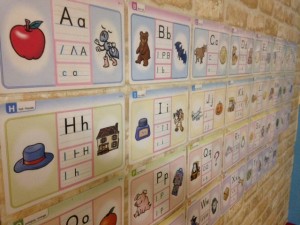
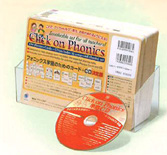
Sounds are then put together into three-letter-words, again using the flashcards from Click-on-Phonics. Throughout this process, I regularly read storybooks to them, with the aim of delivering the message that letters put together in words actually carry meaning.
FROM PHONICS EXERCISES TO ACTUAL BOOKS
Usually by the time students can read Click-on-Phonics’ 3-letter-words, they’ve attended my classes long enough to be familiar with most of the vocabulary found in each book of Level 1 of the SPRINGBOARD series of books.
So, in all classes longer than 50 minutes (I teach 50 minute, 80 minute & 180 minute lessons) I have implemented a formal reading program using SPRINGBOARD.
ABOUT SPRINGBOARD series
- There are 16 levels with Level 1 being the easiest.
- The challenge level increases with each level.
- There are 8 books in each level.
- The challenge level is the same in each book within a level.
- Each book in the early levels has 8 pages, with 1 ~ 3 simple sentences on each.
HOW MY READING PROGRAM WORKS
- All students receive a personal “Reading Card”.
With it students know what level they are currently on and which books they have read within that level.
- All students start at Level 1. Even those new students to the class who perhaps have had experience with English at another school start at Level 1. Put simply, everyone starts at Level 1.
- Students read every book within each level. My signature on their Reading Card lets students know which books they have completed. After they have read each book in the level, they receive a new paper for their Reading Card and progress to the next level.
- Between 20 ~ 30 minutes is spent each lesson on the program.
- Occasionally at the end of the session there is a Sticker Challenge. Students can get a sticker on their Reading Card if they choose to read a book to the whole class. The book they select must be one that I have signed on their Card.
IN CLASS
1. Each student gets their Reading Card, then students select a book from the SPRINGBOARD collection within their current level.
2. They begin individually reading. If they come across a word that they cannot read, they ask a classmate for help:
“What does this say?” “What’s this?” or “Help me, please”.
If no classmate can help, students ask me. I am in the meantime observing and offering help and support.
3. When a student feels comfortable that they can read their current book, they come to me:
“Matthew, I’m ready”.
We sit together and the student reads his/her book to me. Through questioning and
other interaction I check the student’s comprehension of the text throughout the reading
or at the end of the reading.
4. I give an evaluation on the student’s reading. If I’m satisfied that they were able to read
every word, I sign my name on their reading card and they move onto another book in
their level. If the student struggled somewhat during the reading, I’ll sign “half” my name
on their card, give help on the problem areas and have the student spend more time on
that book. To confirm the student’s ability to read each word, I may randomly write words
from the book on the whiteboard for the students to read to me.
Here’s a short video of the program in action in class. The students have only recently begun the program and so are on Levels 1 and 2. The girl reading to me is 7 years old.
■VIDEO :”SPRINGBOARD” ーHow it works in class
The girl reading in this video is 9 years old. She has nearly 3 years of English experience. She began the SPRINGBOARD Program 2 years ago. She is on Level 5.
■VIDEO: SPRINGBOARD “LEVEL 5”
I like the SPRINGBOARD Series because:
- it’s well structured.
- the text and pictures are not on the same page.
- students like the stories.
- students feel success reading the stories.
Read on!












